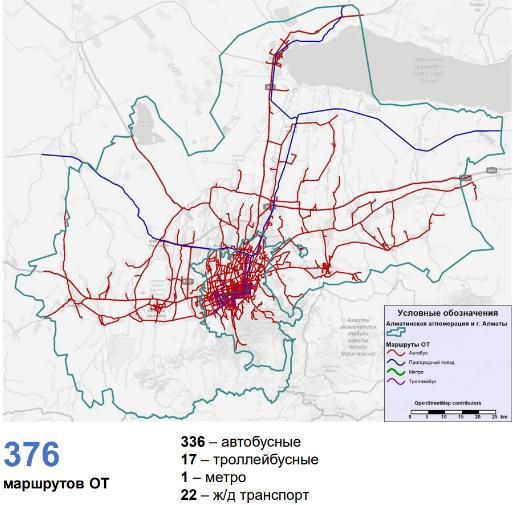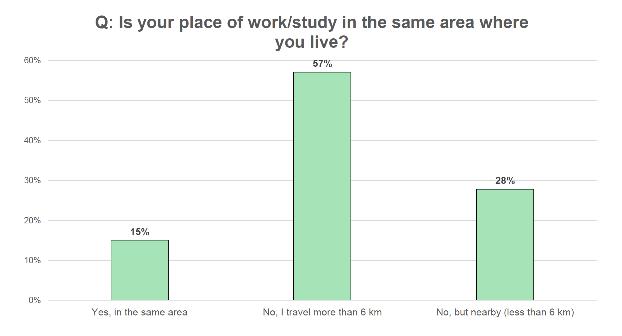Introduction of a New Ticket Fare for Public Transport
Introduction
The public transport system is an important element of urban infrastructure, ensuring efficient movement for the residents and guests of the city, reducing traffic congestion, and minimizing environmental impact. Convenient and accessible ticket and payment systems play a key role in this system, making public transport attractive to users.
Affordable and integrated ticket fares encourage people to use public transport more frequently.
For reference: An integrated ticket is a single ticket that allows passengers to travel on one or more types of transport provided by one or several operators.
With the development of the public transport system, various ticket fares have emerged, allowing passengers to combine different types of transport for travel. The integrated ticket system ensures easy transfers between transport types and operators, providing convenience and flexibility in travel. It not only offers passengers a wide choice of routes but also makes transport systems more efficient and interconnected overall.
Current Ticket Fare Situation
The ticket system in Almaty’s public transport is convenient and considered one of the most advanced in the country. To travel around the city on public transport, the «Onai» pass is used, which allows payment for travel on any mode of transport, including the metro, buses, and trolleybuses. Single tickets cost 100 tenge for adults and 50 tenge for eligible groups (disabled, students, schoolchildren, etc.) when paid via card, SMS, or QR code. Additionally, «Onai» LLC offers a monthly pass for 7200 tenge, which allows unlimited trips within the month.
Despite the convenience of the «Onai» ticket system, the current situation with the development of public transport requires consideration of the introduction of new fare plans for city travel.
Current Situation of Public Transport Development
Currently, Almaty offers a wide range of public transport for convenient movement both within the city and in its suburbs (see Figure 1). There are 376 routes in the city, including 336 bus routes, 17 trolleybus routes, 1 metro line, and 22 railway routes.
|
Figure 1: Public Transport Network in Almaty
|
A survey conducted by «Almaty Transport Holding» LLC showed that the primary use of public transport is related to communication between home and work. According to the survey, about 60% of residents travel more than 6 kilometers to work (see Figure 2). As a result, users are often forced to make transfers, especially in the outskirts of the city, where the route network is less developed (see Figure 1). Moreover, a study conducted by «Qala-ai» indicates that only 58% of city residents have an average or high level of mobility.
Based on the above statistical data, several conclusions can be made:
|
. Figure 2: Is your place of study/work in the same area as your residence?
|
Commute time: Around 60% of the respondents in the city have to travel more than 6 kilometers to work. This indicates a significant number of people living in suburban or outskirts areas, which increases travel time and the need for transfers.
- Need for transfers: The likelihood that many public transport users, especially those living in the outskirts, have to make transfers indicates insufficient route density in these areas. This can create inconveniences and increase travel time.
- Population mobility: Only 58% of residents have average or high mobility. This indicates a significant number of people facing difficulties accessing public transport, especially in remote areas. This could be related to underdeveloped transport networks or high travel costs.
- Uneven development of the transport network: In the outskirts of the city, route networks are less developed, limiting public transport accessibility for residents of these areas. This may lead to social and economic isolation for certain population groups.
International Experience
In European megacities, residents are offered a wide variety of tickets, which promotes increased accessibility and use of public transport. Some of the most popular fare models include the following: distance-based, time-based, zone-based, and user data-based fares.
Distance-based fares establish a direct link between cost and the distance traveled, with the cost per kilometer decreasing as the distance increases. Zone-based payment systems are widespread in many cities, where the price depends on the number of zones crossed. User data-based fares are often combined with other models and offer additional options such as day passes or monthly passes for various passenger categories. Time-based payment systems allow passengers to use public transport and make free transfers within a certain time period from the first boarding. This model is the most popular and in demand among the population of many cities. Examples include:
• Berlin: 2-hour tickets that allow unlimited transfers.
• Paris: 90-minute tickets, including transfers between buses and the metro.
• Moscow: 90-minute tickets (Wallet and Troika tariffs), valid for various modes of transport.
These models enhance the convenience and efficiency of public transport use in megacities.
Recommendations
Based on the analysis of the current situation and existing issues with public transport in Almaty, and drawing on international experience, it is proposed to introduce a new 90-minute fare. This will make the public transport system more convenient and economically advantageous for passengers. Below are the main arguments and expected benefits of introducing the new ticket:
Convenience of transfers:
Passengers will be able to freely transfer between different modes of transport (buses, trolleybuses, metro) within 90 minutes. This will reduce waiting times and simplify route planning, especially for those living on the outskirts of the city and who need to make several transfers.
Economic benefit:
Introducing a 90-minute ticket will allow passengers to save on travel costs, especially if they make more than one trip in a short period of time (see Table 1). This will be particularly useful for people who use public transport for short trips with transfers.
Table 1: Examples of public transport fare payments
|
Case |
Regular Ticket |
Monthly Pass |
90-Minute Ticket |
|
Employee: 20 working days per month, no transfers |
40 trips * 100 tenge = 4000 tenge per month |
7200 tenge per month |
- |
|
Employee: 20 working days per month, 1 transfer |
40 trips * (2 tickets * 100 tenge) = 8000 tenge per month 8000 tenge per month |
7200 tenge per month |
40 days * 150 tenge = 6000 tenge per month |
Increasing the attractiveness of public transport:
A more flexible payment system could attract more passengers, reducing the use of private vehicles and easing the load on roads. An increase in passengers could lead to higher revenues for transport companies.
Reducing peak-hour transportation pressure:
Passengers can plan their trips considering the possibility of transfers, which may help distribute transportation demand more evenly throughout the day.
Proposed Fare Structure
Single Ticket: 100 tenge.
90-Minute Ticket: 150-200 tenge. The passenger can make unlimited transfers within 90 minutes.
Monthly Pass: 7200 tenge, as in the current system, with the ability to use all types of public transport without limitation.
Conclusion
Introducing a new 90-minute ticket in Almaty will make public transport more accessible, convenient, and cost-effective for passengers. This will increase the level of mobility for the population and improve the overall quality of transport services in the city.







 1
1





